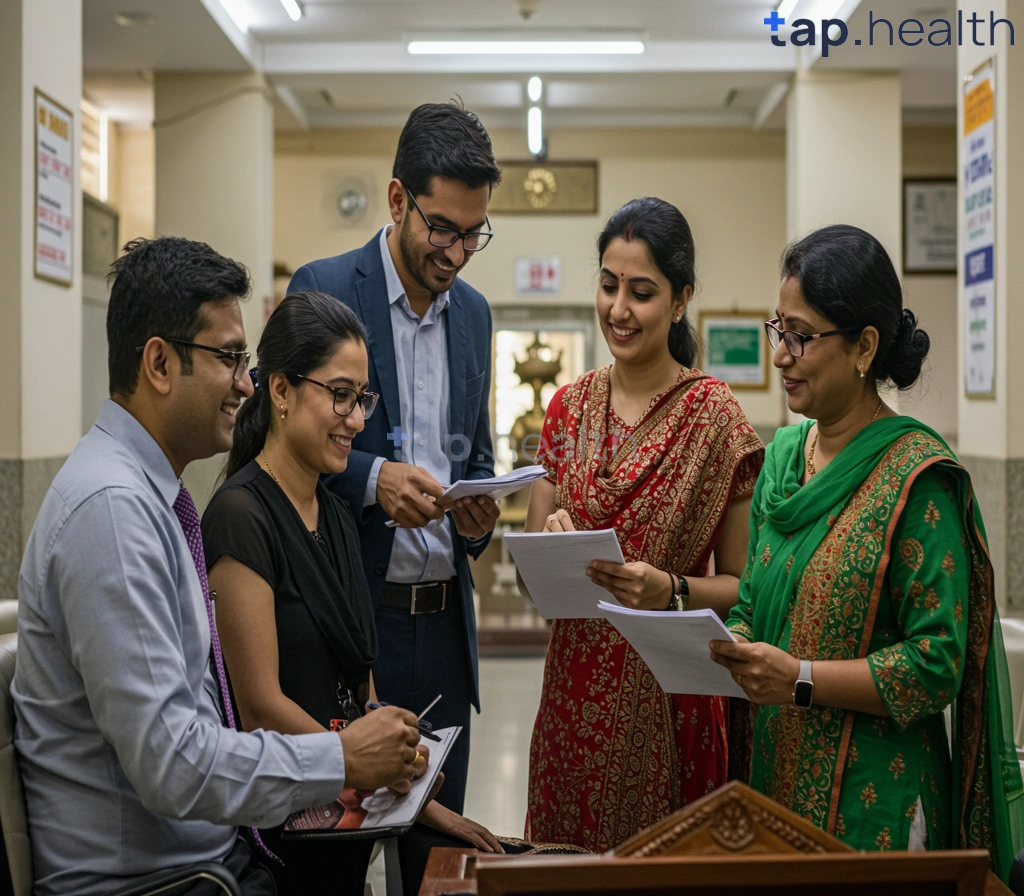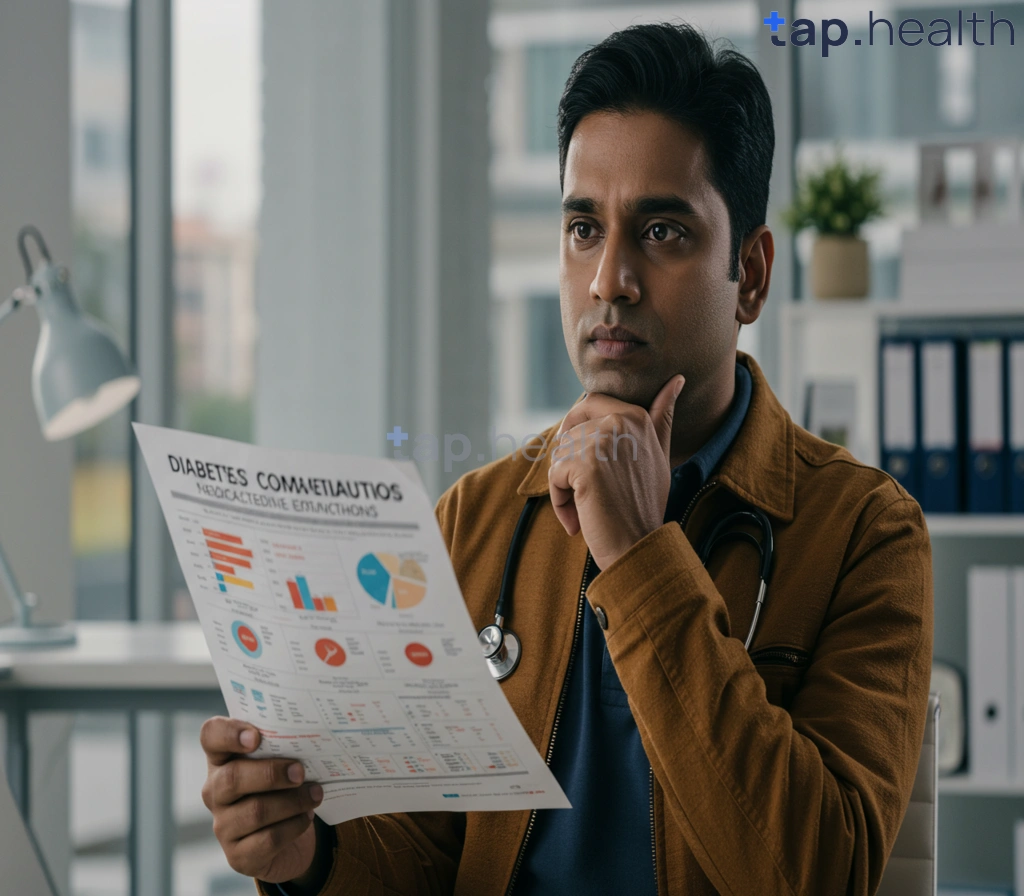Table of Contents
- Understanding Novel Onset Hyperglycemia in Clinical Studies
- Defining Hyperglycemia: A Comprehensive Guide for Researchers
- Key Characteristics of a Novel Onset Hyperglycemia Cohort
- How to Design Studies on New Onset Diabetes and Hyperglycemia
- Comparative Analysis of Novel Onset Hyperglycemia and Diabetes
- Frequently Asked Questions
- References
Have you ever wondered about the complexities of diagnosing diabetes, particularly when it appears unexpectedly? Understanding the nuances of newly diagnosed cases is crucial for effective treatment and management. This blog post delves into the intricacies of Defining a Novel Onset Hyperglycemia and Diabetes Cohort: A Comprehensive Study. We’ll explore the challenges involved in identifying and characterizing this specific patient group, examining the latest research and its implications for improving patient care. Get ready to learn about the critical factors influencing the diagnosis and subsequent management strategies for those experiencing novel onset hyperglycemia and diabetes. Let’s dive in!
Understanding Novel Onset Hyperglycemia in Clinical Studies
Defining the Challenge in India and Similar Climates
The rising incidence of youth-onset diabetes, increasing by 4% annually in urban India, presents a critical challenge for clinical research. This necessitates a robust definition of novel onset hyperglycemia (NOH) within the context of tropical and subtropical regions, where unique environmental and lifestyle factors may play significant roles. Understanding NOH requires careful consideration of factors like genetic predisposition, dietary habits, and the prevalence of infectious diseases—all of which may differ significantly from populations in temperate climates. Defining consistent criteria for NOH is crucial for accurate diagnosis, effective treatment strategies, and targeted public health interventions.
Developing a Robust Cohort Definition
Establishing a comprehensive cohort for NOH studies in India and similar regions requires a multi-pronged approach. This includes establishing clear diagnostic criteria for hyperglycemia, considering both fasting and post-prandial glucose levels. It’s also vital to account for the potential influence of factors such as obesity, physical inactivity, and family history of diabetes. Furthermore, researchers must account for the potential influence of infections common in tropical climates that might affect glucose metabolism. Developing a standardized approach will allow for better comparison of data across different studies, ultimately leading to a more complete understanding of NOH. Understanding and managing Blood Sugar Levels is crucial in this context.
Actionable Steps for Researchers
Researchers focusing on NOH in India and tropical regions should prioritize: standardizing diagnostic protocols, incorporating detailed lifestyle questionnaires, and considering the impact of infectious diseases in their analyses. By rigorously defining NOH within these contexts, we can pave the way for more effective prevention and management strategies. This will aid in addressing the escalating rates of youth-onset diabetes and improving the overall health outcomes of affected populations. Collaboration across institutions and international partnerships will be crucial in tackling this challenge. Strategies like Meal Timing & Intermittent Fasting for Glycemic Stability may also play a role in managing NOH.
Defining Hyperglycemia: A Comprehensive Guide for Researchers
Understanding Hyperglycemia in the Indian and Tropical Context
Hyperglycemia, characterized by elevated blood glucose levels, is a significant health concern globally, particularly impacting populations in India and other tropical countries. This is crucial for researchers defining cohorts for studies on novel onset hyperglycemia and diabetes. Understanding the nuances of hyperglycemia in these regions is paramount due to variations in lifestyle, diet, and genetic predispositions. For example, the prevalence of type 2 diabetes is significantly higher in many Indian states, necessitating a keen awareness of regional factors when establishing diagnostic thresholds.
Defining Diagnostic Criteria and Challenges
Diagnosing hyperglycemia involves careful consideration of fasting blood glucose levels, oral glucose tolerance tests (OGTT), and HbA1c measurements. The latter is especially relevant, as studies show HbA1c levels above 9% are reported in over 30% of diabetes patients. This highlights the importance of accurate HbA1c testing, especially given potential variations in laboratory standards across different regions. Furthermore, considering factors like malnutrition and infectious diseases common in tropical settings is crucial to avoid misinterpretations in diagnostic tests and ensure a robust cohort definition. Understanding what constitutes a normal blood sugar level is also crucial; for more information, see our guide: Is a 100 mg/dL Blood Sugar Level Normal? Comprehensive Guide.
Developing Region-Specific Research Protocols
Developing a comprehensive study on novel onset hyperglycemia and diabetes in India and tropical countries requires a rigorous approach to cohort selection. This includes careful consideration of regional differences in access to healthcare, diagnostic capabilities, and patient awareness. Implementing standardized protocols for data collection and analysis is essential to minimize bias and ensure reliable results. Researchers should actively engage with local communities to enhance recruitment and participation rates, facilitating a truly representative cohort. This collaboration ensures the findings are both impactful and relevant to the specific challenges of the region. The strong link between diabetes and obesity should also be considered when designing studies, as obesity is a significant risk factor for developing type 2 diabetes.
Key Characteristics of a Novel Onset Hyperglycemia Cohort
India faces a significant public health challenge with the alarmingly high number of early-onset diabetes cases, often manifesting between the ages of 25 and 40. This necessitates a comprehensive understanding of the characteristics defining a novel onset hyperglycemia cohort, particularly within the Indian and tropical country contexts. Understanding these characteristics is crucial for developing targeted prevention and management strategies.
Defining the Cohort: Age and Geographic Factors
Early-onset diabetes in India, and indeed many tropical countries, presents differently than in Western populations. The age range of 25-40 years represents a crucial window for intervention. We need to define cohorts based not only on age but also on geographic location, considering the varied lifestyles and genetic predispositions across different regions of India and other tropical nations. Further research into environmental factors, such as dietary habits and levels of physical activity specific to these regions, is critical. This will help identify unique risk factors.
Metabolic and Genetic Markers
Characterizing this cohort requires a deep dive into specific metabolic and genetic markers. Studies should examine the prevalence of insulin resistance, impaired glucose tolerance, and specific genetic polymorphisms associated with increased risk in this younger demographic within Indian and tropical populations. This granular data will inform the development of personalized interventions.
Lifestyle and Socioeconomic Influences
Lifestyle factors, such as diet, physical activity, and stress levels, must be considered within the context of socioeconomic backgrounds. Understanding the interplay between these factors and the onset of hyperglycemia is essential for designing effective public health campaigns. These campaigns must be culturally sensitive and tailored to the specific needs and circumstances of the target populations within India and other tropical countries. Focusing on preventative measures in these high-risk groups is paramount. For example, incorporating Effective Anti-Inflammatory Diet Strategies to Boost Insulin Sensitivity could be a crucial component of such campaigns. Furthermore, prioritizing The Importance of Quality Sleep in Managing Diabetes can significantly contribute to overall health and disease management.
How to Design Studies on New Onset Diabetes and Hyperglycemia
Understanding the Challenge in Indian and Tropical Countries
Designing effective studies on new-onset diabetes and hyperglycemia in India and other tropical countries requires careful consideration of unique regional challenges. A significant hurdle is the high rate of undiagnosed diabetes; the International Diabetes Federation estimates that 50% of diabetes cases worldwide remain undetected. This necessitates strategies to improve early detection and diagnosis within these populations. Factors like limited access to healthcare, lower awareness levels, and the prevalence of specific risk factors in these regions must be addressed in study design.
Key Considerations for Study Design
Effective study design should incorporate strategies to address the high prevalence of undiagnosed diabetes. This includes using representative sampling methods to capture diverse populations, considering socioeconomic factors influencing access to care, and developing culturally appropriate screening and diagnostic tools. For example, incorporating community-based screening programs could drastically improve identification of individuals with new-onset hyperglycemia and diabetes. Furthermore, focusing research on specific high-risk groups within these regions, like individuals with a family history of diabetes or those with pre-existing conditions, is crucial. Managing associated conditions like high cholesterol is also vital; for insights on that, see our blog on How to Manage Cholesterol Levels with Diabetes?
Actionable Steps for Researchers
Researchers should prioritize accessible and cost-effective methods for data collection. This might involve leveraging mobile health technologies or community health workers to reach remote populations and overcome logistical barriers. Analyzing the unique risk factors prevalent in the Indian and tropical contexts, such as dietary habits, lifestyle patterns, and genetic predispositions, is vital for developing effective prevention and management strategies. The potential of new technologies to improve diabetes lifestyle management is also an area worth exploring; you might find our blog on How Can New Technological Advances Improve Diabetes Lifestyle? helpful. Ultimately, collaborative partnerships with local healthcare providers and community leaders are essential for successful study implementation and data interpretation. This will ensure studies are culturally relevant and produce impactful results.
Comparative Analysis of Novel Onset Hyperglycemia and Diabetes
Understanding the Indian Context
The prevalence of diabetes in India necessitates a deep dive into novel onset hyperglycemia and its progression to diabetes. A significant challenge lies in the high comorbidity of diabetes with hypertension; over 60% of individuals with diabetes in India also experience hypertension, a crucial factor in cardiovascular complications prevalent across India and other tropical regions. This comparative analysis focuses on identifying key distinctions in the onset, progression, and management of these conditions within this specific demographic.
Differentiating Novel Onset Hyperglycemia and Diabetes
This study aims to delineate the differences between individuals experiencing novel onset hyperglycemia and those diagnosed with established type 2 diabetes. We will investigate factors contributing to the rapid progression from hyperglycemia to full-blown diabetes, particularly within the Indian context. Understanding this progression is crucial for developing targeted interventions and preventative strategies. Early detection and management of hyperglycemia are vital to reducing the long-term health burden of diabetes in India and similar tropical climates. This is especially important given that What is Non-Insulin Dependent Diabetes? is a prevalent form of the disease.
Regional Implications and Future Directions
This research seeks to provide valuable insights for healthcare professionals in India and other tropical countries. The high prevalence of both diabetes and hypertension, coupled with unique lifestyle and environmental factors, demands a regionally-specific approach to diagnosis, treatment, and prevention. Further studies are crucial to identify the most effective strategies for managing novel onset hyperglycemia and preventing its advancement to diabetes in these high-risk populations. The findings will directly inform public health strategies and clinical practice guidelines, ultimately improving patient outcomes. Understanding the complexities of diabetes across all ages is crucial; for instance, it’s important to note that even Can a Newborn Have Diabetes?.
Frequently Asked Questions on Defining a Novel Onset Hyperglycemia and Diabetes Cohort
Q1. What is novel onset hyperglycemia (NOH), and why is it a significant concern in India and similar climates?
NOH refers to the newly developed high blood sugar levels. It’s a major concern in India and tropical regions due to the rising incidence of youth-onset diabetes (increasing by 4% annually in urban India). Unique environmental and lifestyle factors in these areas, such as dietary habits and infectious diseases, significantly influence NOH, requiring specific diagnostic criteria and treatment strategies.
Q2. How can researchers develop a robust cohort definition for NOH studies in India and tropical regions?
Researchers need a multi-pronged approach: establish clear diagnostic criteria using fasting and post-prandial glucose levels; account for obesity, inactivity, family history, and common tropical infections; and standardize data collection for better comparison across studies. Detailed lifestyle questionnaires are crucial.
Q3. What are the key characteristics of a NOH cohort in India, and what factors should be considered when studying it?
The key characteristics include an age range of 25-40 years, geographic location (considering regional variations), metabolic markers (insulin resistance, impaired glucose tolerance, genetic polymorphisms), and lifestyle and socioeconomic influences (diet, activity, stress, socioeconomic background). Preventative measures targeting these high-risk groups are crucial.
Q4. How should studies on new-onset diabetes and hyperglycemia be designed to address the challenges in India and tropical countries?
Studies must account for high rates of undiagnosed diabetes. Strategies include representative sampling, considering socioeconomic factors, culturally appropriate tools, community-based screening, and focusing on high-risk groups. Cost-effective data collection methods and collaboration with local healthcare providers are vital.
Q5. What is the difference between NOH and established type 2 diabetes, and why is a comparative analysis important in the Indian context?
The comparative analysis will define the differences between NOH and established type 2 diabetes, focusing on the rapid progression from hyperglycemia to diabetes. In India, the high comorbidity of diabetes and hypertension (over 60% of individuals with diabetes also have hypertension) necessitates understanding this progression for targeted interventions and preventative strategies.
References
- Electronic Health Records-Based Data-Driven Diabetes Knowledge Unveiling and Risk Prognosis : https://arxiv.org/pdf/2412.03961
- Towards Transparent and Accurate Diabetes Prediction Using Machine Learning and Explainable Artificial Intelligence : https://arxiv.org/pdf/2501.18071





